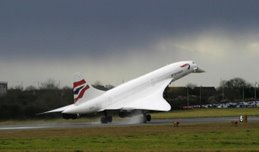DEMRE/MYRA -SEPTEMBER 2008
Saint Nicholas (270 - 6 December 346) is the common name for Nicholas of Myra, in Lycia. Born in Patara, he was elected Bishop of Myra, and died there. The stories of his charitable acts took on legendary dimensions during the following centuries. One of these stories concerned three boys who were hacked into pieces by a greedy butcher, who salted and pickled them for sale in his shop. Nicholas miraculously restored the boys to life. On another occasion, on hearing that the daughters of a poor Myran could not marry for lack of a dowry, Nicholas stole under the man's window at night and left a bag of gold for each girl. Also known as Nicholas the Wonderworker, he had a reputation for secret gift-giving, such as putting coins in the shoes of those who left them out, and thus became the model for Santa Claus, whose English name comes from the Dutch Sinterklaas.
This post shows some of the sites in Lycia that St. Nicholas frequented, far from the reindeer and from the snows of mythic Lapland...

"TAHTALI MOUNTAIN - The Turkish Riviera near Antalya has a peculiar feature as one may join holidays in the mountain with holidays on the beach. Actually, on the way from the Palmiye beach resort to Demre, one comes across with the Tahtali Aerial Cableway, which leads you to Mount Tahtali, at 2,365m above sea level. With a length of 4,350 meters, the Tahtali Cableway is said to be the longest cableway in Europe, and the second longest worldwide"

"TEKIROVA is one of the four municipalities of the Kemer region"

"CLOCK TOWER"

"KUMLUCA - Named after its sandy soil (kum means sand in Turkish), Kumluca, with some thirty thousand inhabitants, has excellent soil conditions for growing watermelons..."

"SEA & ROCKS"

"FINIKE - The port is now a yacht marina, and has a small fishing fleet, but Finike is best known for its oranges"

"BAY in the morning"

"EMPTY BEACH"

"SAINT NICHOLAS - There is a story (and a controversy) behind the statues of St. Nicholas shown in Demre. The first, on show from 1981 until 2000, is a large bronze figure carrying a gift bag over his shoulder, and surrounded by three children. In December 2000 Russian sculptor Gregory Pototsky and Moscow mayor, Yuri Luzhkov, presented Demre with this figure, dressed as an Orthodox bishop. Russian tourists and pilgrims invaded Demre to pray at the base of the statue. In 2005, a new image appeared and the saint was tucked away to the courtyard wall outside the church. That's where this picture was taken"

"SANTA CLAUS - In 2005 the town council removed the bronze statue, replacing it with this bakelite Santa Claus. This change was controversial and raised international protests. However, despite pressure, Santa still stood until December 2008. The most recent image is a new «Turkish Santa», unveiled Christmas Day, 2008. It seems that his author, sculptor Necdet Can, tried to make it «look like Turks». It seems however that the statue doesn't look like Saint Nicholas, who lived in the 6th century, five centuries before the Turks arrive in Anatolia..."

"NOEL BABA MÜZESI"


"CHURCH - By the 10th century Nicholas had become the most popular folk saint in the Byzantine realm, counting as the patron of children, poor virgins, innocent prisoners, sailors and Russians. His tomb in Myra became the object of pilgrimages. A church was built around it in the 6th century. After it was destroyed in an Arab raid, the church was rebuilt in 1043 to take its present form with the help of Constantine IX"

"TOURISTS - The Church of St. Nicholas fell into disuse in Turkish times. In 1862 Tsar Alexander I bought the edifice and began restoring it. Further restorations were carried out in recent years by the Turkish government, which also promoted the annual festivities which take place on the saint's feast day. Thousands of pilgrims from Italy, Greece and other countries come to Myra each year on December"

"CEILING -Jesus and St. Nicholas"

"EMPTY TOMB - The fame of St. Nicholas was brought to the west by Byzantine princess Theophanous, who married Otto II to seal a treaty between the Holy Roman Empire and the Byzantine Empire. In 1087, some Italian merchants broke into the tomb, removed the bones and furtively translated them to Bari, reason why he is also known as Nicholas of Bari. Some other bones however were found in Myra and transferred to the Antalya Museum. Saint Nicholas is revered among Catholic and Orthodox Christians and is also honoured by various Anglican and Lutheran churches"




"MYRA TOMBS - Myra has some of the most impressive and well preserved Lycian monuments, including an excellent collection of rock tombs. Many of the tombs have log cabin features carved into the rock, presumably reflecting the domestic architecture of the period. A few ones have inscriptions in the Lycian language"

"AMPHITHEATRE - The imposing 2nd century theatre was later converted into an arena for gladiator fights and wild animal shows. Many carvings and inscriptions in the theatre are still visible, and tunnels and side access ways have been cleared. While much of the seating is intact, the stage building is partly collapsed"

"MASKS - A set of three carved masks, presumably from the frieze, lies among the remains in the approach to the theatre"

"COASTAL ROAD - Way back"

"TAURUS SUNSET"





























































































